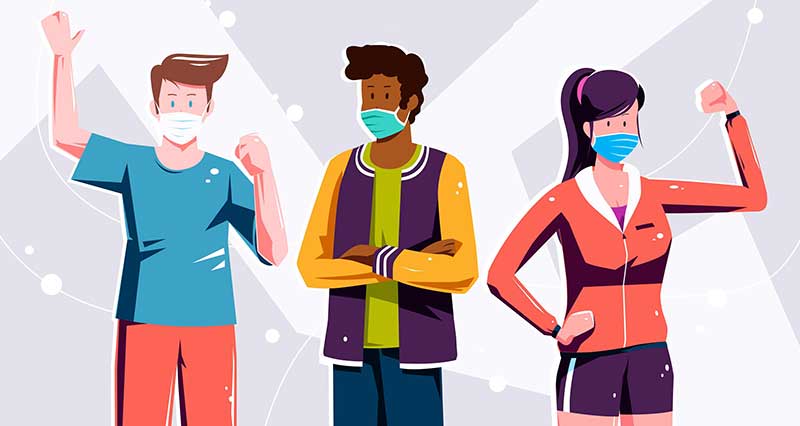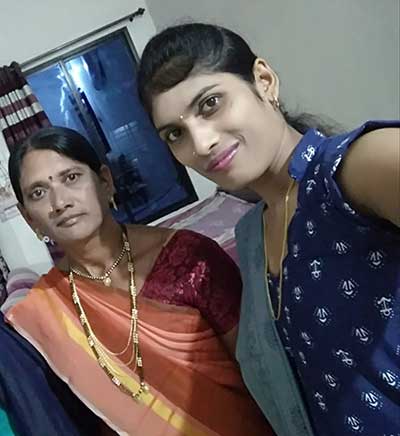Covid-19 makes India’s youth smarter!

Within days of imposition of the lockdown to contain the Corona virus, hundreds of millions of migrant workers packed up and set off for faraway home, trekking, often by foot, side by side, at unsafe social distances.
With the government having miserably failed to provide succour to the stranded people and the resources of voluntary organisations already overstretched, the sufferers were left to their ingenuity to fend for themselves. The crisis also brought out the remarkable tenacity of people in the face of hunger and misery. Some young people showed amazing resilience and came up with contextual responses.

Crises often bring out the best in humans, and the Corona virus pandemic is no exception. The pandemic sparked off hidden springs of courage and valour, particularly among students, who used their social media skills with remarkable effect. Many of them were able to shake the system out of its stupor. Thankfully, we are witnessing the emergence of an enlightened and resilient generation which won’t meekly accept injustices which their predecessors suffered on account of illiteracy and lack of empowerment. We can expect to see a deep wave of social churning and simmering unrest is going to manifest in complex forms.
Pravina Buradkar is a 23-year-old firebrand who comes from a poor family in Wanoja village in Chandrapur district of Maharashtra. She was taking coaching for civil services examination at a government-run facility in Pune. Since her parents couldn’t afford her monthly expenses, she took up a part-time employment. The lockdown was a cruel surprise. Pravina and her roommates had little savings to fall back upon. They located a relief centre where free meals were being served.
Meanwhile, Pravina kept scouring the internet for links which could provide clues for a safe passage to her village. The entire experience was a great learning for her. “I dialled almost everybody who mattered, right from the helpline to my local legislator. My applications would invariably return with inconsistent reasons being offered. I became so disillusioned with their answers that I would often lose my temper,” says Pravina.
India is home to a fifth of the world’s youth. They make up the world’s largest ever cohort of like-minded young people, and they see absolutely no reason why the world shouldn’t run by their rules. Half of India’s population of 1.3 billion is below the age of 25, and a quarter is below the age of 14. India’s young population is its most valuable asset and provides the country with a unique demographic advantage.
Having lost all hope in the system, she started organising people of her home district who were stranded in Pune. She became her group’s leader and they started making a collective campaign for their cause. A local NGO, MPSC Students Rights, cobbled together by activist-oriented students like Pravina lobbied strongly with local authorities and finally succeeded.
Pravina recalls her journey by bus from Pune to her native village. “It took us a full day to reach our home. There was excitement at having got a reprieve from the tough ordeal of almost two months. But this joy was marred by the sight of thousands of migrants trekking their way on foot. We saw hundreds of vehicles that were ferrying loads of passengers as if they were a herd of livestock being taken to the abattoir. It was a spectacle I cannot forget. It gave me a clear understanding of the plight of India’s poor… bonded in their own homeland. That image refuses to fade away from my mind even though I have settled down in the rhythms of my home and village.” So, Pravina has turned into an active campaigner for changing the status quo and spends her post-return home quarantine swapping strategies with those of her ilk.
Enterprising young people like Pravina can become harbingers for a new rural revolution that could make villages a nucleus for local livelihood promotion. With thousands of migrants returning to their native villages, it is extremely necessary to create additional employment if we have to stave off social, political and economic unrest. Many of the migrants returning home have diverse skill sets, but they may not be suitable candidates for entrepreneurial ventures. A marriage between their skills and the business acumen of the youth can open new vistas of rural regeneration.
India is home to a fifth of the world’s youth. They make up the world’s largest ever cohort of like-minded young people, and they see absolutely no reason why the world shouldn’t run by their rules. Half of India’s population of 1.3 billion is below the age of 25, and a quarter is below the age of 14. India’s young population is its most valuable asset and provides the country with a unique demographic advantage. Young Indians are ambitious and show greater autonomy in their career decisions.Through their own individual experience these young activists are visualising a zoomed-out perspective that gives them some idea of the larger reality.
For more articles like this, subscribe to the print or digital editions of THE TEENAGER TODAY.
Moin Qazi holds PhDs in Development Economics and English. He worked for three decades at State Bank of India in various developmental roles. He served as Chancellor’s nominee in Nagpur University and as a Member of the National Committee on Financial Inclusion at NITI Aayog. He is the recipient of the UNESCO World Politics Essay Gold Medal, Dr Babasaheb Ambedkar Gold Medal from Dalit Sahitya Academy and Rotary International’s Vocational Excellence Award.





